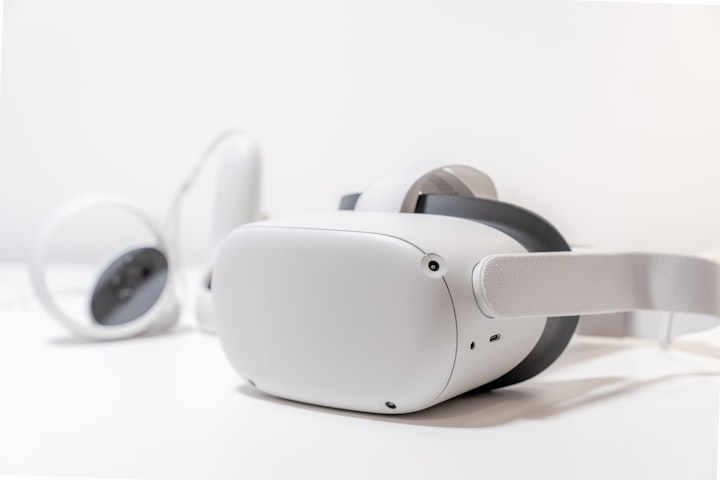
Virtual reality, or VR, is a technology that is revolutionizing the way we experience the world around us. By creating a simulated environment that users can interact with using specialized hardware and software, VR is able to transport us to places we could only imagine before. In this article, we will explore the history and current state of virtual reality, as well as the potential applications and future developments of this exciting technology.
History of Virtual Reality
The concept of virtual reality has been around for several decades, with early pioneers like Ivan Sutherland and Jaron Lanier working on primitive VR systems in the 1960s and 70s. However, it wasn't until the 1990s that VR began to gain mainstream attention, thanks in part to the development of more advanced graphics and processing technologies.
One of the earliest examples of a commercial VR system was the Virtuality arcade machines, which were introduced in the early 1990s. These machines used a head-mounted display and a pair of hand-held controllers to allow users to play immersive 3D games. While the technology was impressive for its time, it was expensive and had limited appeal to the general public.
In the decades since, VR has continued to evolve and improve, with advancements in hardware and software making it more accessible and affordable. Today, VR systems are used in a wide range of industries, from gaming and entertainment to education, healthcare, and more.
Types of VR Systems
There are several types of VR systems available today, each with their own strengths and weaknesses. The most common types include tethered, standalone, and mobile VR.
Tethered VR systems require a high-performance computer or gaming console to power the VR experience. These systems are typically the most powerful and offer the most immersive experience, but they are also the most expensive and require a significant amount of setup and configuration.
Standalone VR systems, on the other hand, are self-contained and include all the necessary hardware and software within the headset. These systems are more affordable and easier to set up than tethered systems, but they are also less powerful and offer a more limited experience.
Mobile VR systems use smartphones to power the experience and are typically less powerful than tethered or standalone systems. However, they are the most affordable and widely accessible type of VR system, making them a popular choice for casual users and those who are new to VR.
Technical Aspects of VR
Creating a believable and immersive VR experience requires a combination of advanced technologies, including graphics rendering, spatial audio, motion tracking, and haptic feedback.
Graphics rendering involves the use of high-performance GPUs to render complex 3D graphics in real-time. This allows VR experiences to offer detailed and realistic environments that can be explored and interacted with.
Spatial audio allows users to hear sounds from different directions and distances, creating a more realistic and immersive experience. This technology is essential for creating a sense of presence within the virtual environment.
Motion tracking uses sensors and cameras to track the user's movements, allowing them to interact with the virtual environment in a natural and intuitive way. This is essential for creating a sense of agency and control within the VR experience.
Haptic feedback involves the use of tactile sensations to simulate touch and texture within the virtual environment. This technology is still in its early stages, but it has the potential to greatly enhance the sense of immersion within VR experiences.
Applications of VR
One of the most exciting aspects of VR is its potential for use in a wide range of industries and applications. Here are just a few examples:
Gaming: VR is already being used to create immersive gaming experiences that allow players to explore and interact with virtual worlds in unprecedented ways.
Education: VR can be used to create interactive simulations of real-world environments, allowing students to learn and explore in a safe and controlled environment.
VR can also be used in training and simulations for various industries. For example, pilots can use VR to practice emergency scenarios without the need for a real plane, and medical professionals can use VR to simulate surgeries and other procedures. This not only saves costs but also ensures a safer and more controlled environment for training.
Another exciting application of VR is in the field of entertainment. VR offers a new level of immersion in gaming and allows players to fully immerse themselves in virtual worlds. Players can interact with the game world in a more natural and intuitive way, and VR can even simulate physical sensations such as wind, heat, and vibration to further enhance the experience.
As VR technology continues to improve, we can expect to see even more innovative and exciting applications in various fields. For example, VR could revolutionize the way we work and collaborate by allowing remote teams to meet in virtual environments, or it could be used to create virtual tourism experiences that allow people to explore different parts of the world without leaving their homes.
Despite its many benefits, VR technology also presents some challenges. For example, the high cost of VR hardware can be a barrier to widespread adoption, and some people may experience discomfort or motion sickness when using VR. Additionally, VR experiences can be isolating and may lead to a lack of social interaction, which can have negative effects on mental health.
In conclusion, virtual reality is a technology that has the potential to transform various industries and enhance our daily lives. From education to entertainment, VR offers a unique and immersive experience that can help us better understand complex concepts, train for various professions, and enjoy new forms of entertainment. As the technology continues to evolve and become more accessible, we can expect to see even more exciting and innovative applications of virtual reality in the years to come.






Comments
There are no comments for this story
Be the first to respond and start the conversation.